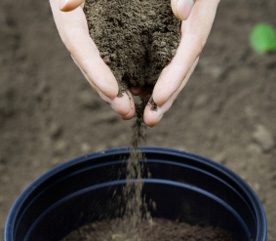22 Secrets to a Care-Free Landscape
Read these 22 gardening tips to make all your landscaping projects fun and easy!

1. Whether you’re starting from scratch or making over an existing landscape, start with a plan. Think about how you want to use your space, how much money you want to spend and how much time you want to devote to creating and maintaining a landscape. Then stick with your plan to keep your workload to a minimum.
2. Despite the appeal of a large yard with expansive beds, your maintenance obligations increase with your landscape’s size. Reducing the scale of your project translates into less work.
3. Keep your landscape plans manageable. Don’t let yourself be tempted into taking on a bigger project than you have time for. And, no matter how appealing, avoid plants that need lots of attention, outgrow their space or become invasive.
4. Identify the ongoing maintenance headaches that require your attention year after year and commit to finding long-term solutions. Crossing known problems off your maintenance list will lighten your workload all season long.
5. Container gardens are a favourite for outdoor decor, but they often require daily watering and frequent fertilizing to look their best.
To reduce the workload, cluster your containers for convenient watering, use large pots to prevent the soil from drying out quickly, incorporate a slow-release fertilizer into the soil and try self-watering pots.
6. Controlling insect-related damage is easiest when you catch it early. Make it part of your routine to check for spots and holes on leaves and blooms, and examine any wilted, stunted or discoloured plants for signs of infestation.
7. Don’t waste time and money adding fertilizer and other products to your soil until you know what’s necessary. Learn about your soil’s PH levels, nutrient deficiencies and texture by getting a soil test through your county extension service or a soil-testing lab.
8. When it comes to fertilizers, slow-release products require fewer applications than fast-release ones, and in general, less is better than more. For overall soil improvement, consider using compost, which you can prepare right in your yard.
9. For precise and consistent watering without lifting a finger, install an automatic irrigation system. You can buy do-it-yourself systems at home and garden centers or hire a professional to do the job.
10. Make sure you have easy access to water all around your property, including outdoor spigots, sprinklers and hoses. This helps to keep your plants watered with minimal effort throughout the growing season.
11. Save time by organizing your landscape by care requirements. Some plants suffer in summer’s heat and need frequent watering, while others thrive on neglect.
12. A traditional lawn requires frequent mowing and watering to retain its lush appearance. Cut back on your workload by choosing a grass that thrives in your area or by converting some areas of your lawn to ground covers.
13. A clean edge separating the lawn, paths and beds gives your landscape a professional look. Many gardeners find that separation easier to maintain if they use a vinyl, metal or brick edging to keep mulch or gravel from spilling into the lawn and grass from growing into beds.
14. If you do only one thing to shorten your landscaping to-do list, put down a layer of mulch on all your garden beds. A 2- to 4-inch layer of leaves, evergreen needles or wood chips reduces the soil’s need for water and keeps the weeds under control. As a bonus, the mulch improves the soil as it breaks down.
15. For years of reliable blooms and foliage, nothing beats the ease of hardy perennials (like these rudbeckia). To keep the workload down, choose varieties that don’t need frequent dividing or deadheading and that are drought-tolerant or disease- and pest-resistant.
16. When considering landscape construction options and materials, keep ongoing maintenance in mind, even if it adds to the initial cost. Paved and gravel-covered areas, such as patios and walks, are generally low-maintenance.
17. Handling a lawn mower on a steep slope is hard work and potentially dangerous. Consider modifying the grade by terracing it. Or replace a hillside of grass with ground cover.
18. Trees and shrubs anchor a landscape for the long term. Avoid those that drop fruit or are susceptible to disease or pests. And keep their mature sizes in mind when planting, so they won’t have to be moved or need frequent pruning.
19. Find a convenient place to keep your gardening tools and supplies accessible and organized. Whether you build a freestanding shed or simply take over a corner of your garage, you’ll save time when you can easily keep track of your stuff.
20. Weeds can be minimized, though not eliminated. Use eco-friendly products to stop weed seeds from germinating and to kill growing plants. Several layers of newspaper under wood-chip mulch kill weeds by blocking out light. Put landscape cloth under stone pavers or bricks to prevent stones from working through into the soil and weeds from growing through mortarless joints in patios or paths.
21. Having the right tools-and keeping them in good condition-makes all your maintenance tasks easier. Buy products that are durable, comfortable to use and appropriate for your property’s size and specific needs.
22. Ground covers are practical, low-maintenance choices for challenging landscape areas. Before you plant, kill the grass and weeds in the desired bed and double-check to make sure the plant you select is not invasive.



